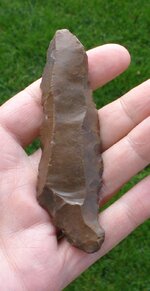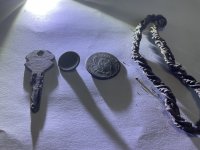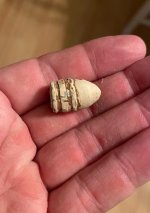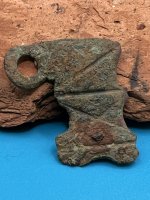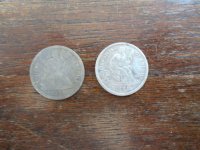uniface
Silver Member
I've annoyed people here by describing this relic and that one as being from the Paleo era. If the artifacts at issue had been fluted points, there'd be no impulse to dispute this assessment. But when they're uniface tools, since these aren't generally as familiar to people as points are (when they're familiar at all), the suspicion arises that ol' uniface here is just blowing smoke -- making it up as he goes along.
THIS IS OK ! IMHO, it's even a good thing. Because, ideally, doubts should provoke questions. And the questions, in turn, should provoke answers. (I've posted a slew of links to information sources, but it isn't reasonable to expect others to be so gonzo interested in this one narrow area that they've read, and all but memorized them, the way gun enthusiasts do ballistic tables).
IMHO, it's even a good thing. Because, ideally, doubts should provoke questions. And the questions, in turn, should provoke answers. (I've posted a slew of links to information sources, but it isn't reasonable to expect others to be so gonzo interested in this one narrow area that they've read, and all but memorized them, the way gun enthusiasts do ballistic tables).
So. Here's one fundamental one, because it covers a key point. From page 31 of Kentucky Archaeology.
Now, this technology did re-appear in Hopewell. But (as concerns the Tennessee-Kentucky heartland) unless someone can show me some evidence of them making larger blades here in the east than the little ones they're well known for, and that they sometimes retouched the edges of them the way Early Paleo people did, acknowledging that the GIGO principle applies (attribution can only be as accurate as data is adequate), the blade below is from a Clovis toolkit. Both positively (this is the sort of thing they made) and negatively (nobody else did anything like this of this size).
THIS IS OK !
 IMHO, it's even a good thing. Because, ideally, doubts should provoke questions. And the questions, in turn, should provoke answers. (I've posted a slew of links to information sources, but it isn't reasonable to expect others to be so gonzo interested in this one narrow area that they've read, and all but memorized them, the way gun enthusiasts do ballistic tables).
IMHO, it's even a good thing. Because, ideally, doubts should provoke questions. And the questions, in turn, should provoke answers. (I've posted a slew of links to information sources, but it isn't reasonable to expect others to be so gonzo interested in this one narrow area that they've read, and all but memorized them, the way gun enthusiasts do ballistic tables). So. Here's one fundamental one, because it covers a key point. From page 31 of Kentucky Archaeology.
R. Barry Lewis said:By comparison with the preceeding period, the Middle Paleoindian tool kit exhibits a number of differences (fig. 2.8). For example, prismatic blades and polyhedral blade cores are absent. The core and blade technology was replaces by the technique called bipolar lithic reduction. This technological change occurred as toolmakers began to use poorer quality stone for their tools.
Now, this technology did re-appear in Hopewell. But (as concerns the Tennessee-Kentucky heartland) unless someone can show me some evidence of them making larger blades here in the east than the little ones they're well known for, and that they sometimes retouched the edges of them the way Early Paleo people did, acknowledging that the GIGO principle applies (attribution can only be as accurate as data is adequate), the blade below is from a Clovis toolkit. Both positively (this is the sort of thing they made) and negatively (nobody else did anything like this of this size).
Attachments
Upvote
0


